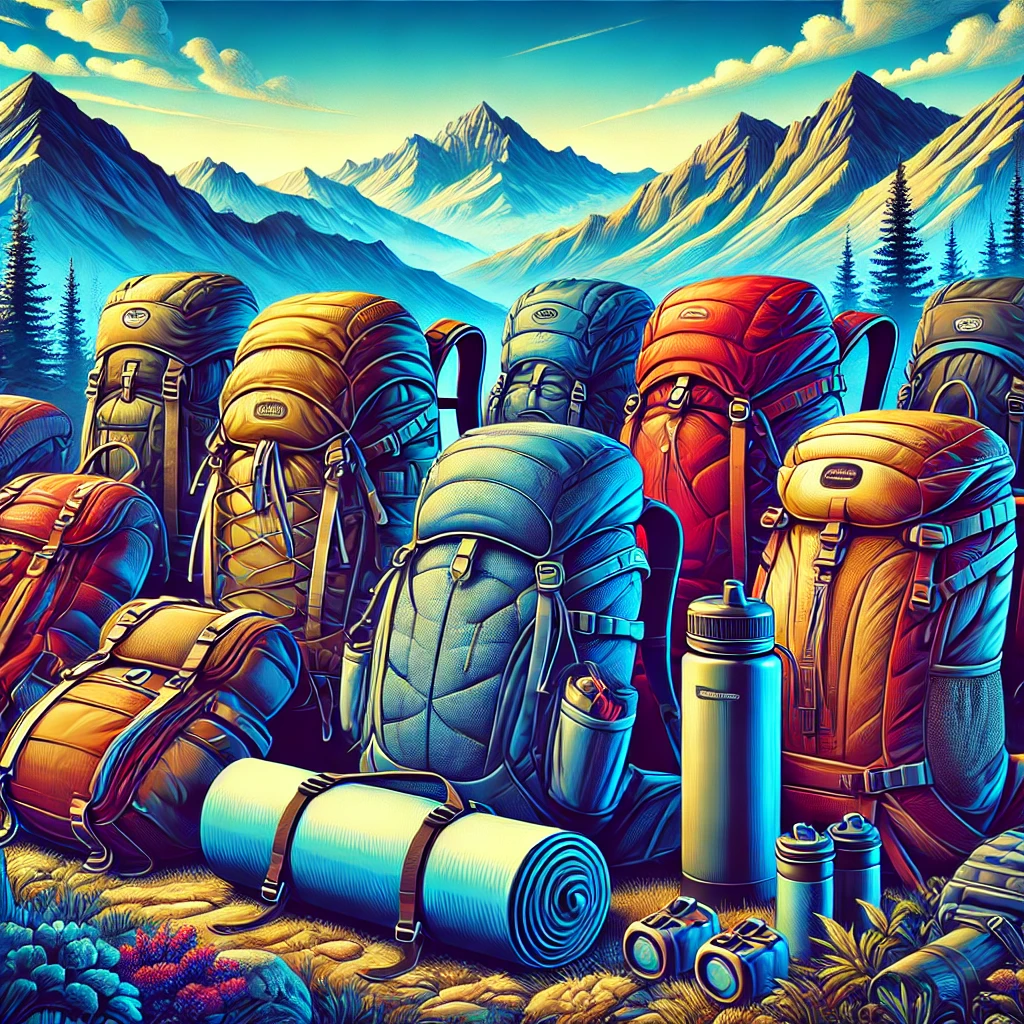The Ultimate Backpack Buying Guide: How to Choose the Best Backpack for Hiking, Travel, and Camping
Choosing the perfect backpack is essential for comfort, organization, and performance, whether you’re heading out for a day hike, a weekend camping trip, or a multi-week trek. With so many options available, selecting the right backpack can feel overwhelming. This guide breaks down everything you need to know to find the best backpack for your needs, including top backpack brands and key features to consider.
If you’re still looking for the best tent for your next adventure, check out our Best Tents of 2025 for expert recommendations.
1. Choosing the Right Backpack for Your Trip
Best Backpacks for Day Hikes & Everyday Use (10-30L)
- Ideal for: Short hikes, city exploring, commuting, and casual travel.
- Key Features to Look For:
- Lightweight and compact design.
- Comfortable shoulder straps and breathable back panel.
- Side pockets for water bottles.
- Internal or external hydration reservoir sleeve (optional for hiking).
- Top-Rated Backpacks: Osprey Talon 22, Deuter Speed Lite, Patagonia Nine Trails.
Best Backpacks for Overnight & Weekend Trips (30-50L)
- Ideal for: 1-3 nights of camping, backpacking, or travel.
- Key Features to Look For:
- Internal frame for better weight distribution.
- Sleeping bag compartment.
- Multiple pockets for easy organization.
- Hip belt pockets for quick-access items.
- Top-Rated Backpacks: Osprey Stratos 36, Gregory Paragon 48, REI Co-op Flash 55.
Best Backpacks for Multi-Day Backpacking (50-70L)
- Ideal for: 3-7 days of hiking and camping.
- Key Features to Look For:
- Adjustable torso length for a custom fit.
- Load lifters and well-padded hip belt.
- Side and top-loading access for convenience.
- Durable, water-resistant materials.
- Top-Rated Backpacks: Osprey Atmos AG 65, Gregory Baltoro 65, Deuter Aircontact Lite 60+10.
Best Backpacks for Expedition & Long-Term Travel (70L+)
- Ideal for: Extended backpacking trips, winter trekking, or carrying heavy loads.
- Key Features to Look For:
- Robust internal frame for maximum support.
- Extra-large capacity with multiple compartments.
- High durability and waterproof protection.
- Top-Rated Backpacks: Mystery Ranch Glacier, Hyperlite Mountain Gear 4400 Southwest, Arc’teryx Bora AR 70.
2. Key Features to Consider When Buying a Backpack
Fit & Comfort
A properly fitting backpack is essential for comfort, especially on longer treks. Look for:
- Torso Length: Adjustable or correctly sized torso to match your height.
- Hip Belt: Supports most of the pack’s weight; should sit comfortably on your hips.
- Shoulder Straps: Padded and adjustable for proper weight distribution.
- Load Lifters & Sternum Strap: Help balance the load and prevent strain.
Material & Durability
- Nylon & Polyester: Common lightweight materials with good durability.
- Ripstop Fabric: Enhances tear resistance.
- Dyneema (DCF): Ultralight and waterproof but expensive.
- Cordura: Heavy-duty and abrasion-resistant.
Backpack Access & Organization
- Top-Loading vs. Panel-Loading:
- Top-loading: Lighter and more compact, but harder to access gear at the bottom.
- Panel-loading: Offers full-zip access, making organization easier.
- Pockets & Compartments:
- Side pockets for water bottles.
- Hip belt pockets for snacks and small essentials.
- Dedicated sleeping bag compartment in larger packs.
Weather Resistance & Waterproofing
- Water-Resistant Coating: Most backpacks have DWR (Durable Water Repellent) treatment.
- Rain Cover: Essential for wet conditions (sometimes included, or sold separately).
- Fully Waterproof Packs: Made of Dyneema or feature roll-top closures.
Special Features
- Hydration Compatibility: Sleeve for a water reservoir.
- Gear Loops & Straps: Attach trekking poles, ice axes, or sleeping pads.
- Compression Straps: Helps stabilize your load.
- Security Features: Lockable zippers for travel.
3. How to Choose the Right Backpack for You
1. Determine Your Trip Type & Duration: Choose a capacity that fits your trip length and gear requirements.
2. Find the Right Fit: Try on different packs with weight inside to see how they feel. Adjust torso length, hip belt, and straps for a snug fit.
3. Consider Your Packing Style: If you like to keep things organized, look for panel-loading designs with multiple compartments.
4. Check Weight vs. Comfort Balance: Ultralight packs are great for reducing load, but they may lack padding and structure for heavier loads.
5. Factor in Climate & Conditions: If you hike in wet conditions, prioritize water-resistant materials and included rain covers.
4. Best Backpack Brands to Consider
- Osprey – Best all-around brand with excellent comfort and durability.
- Deuter – Great for ergonomic fit and back ventilation.
- Gregory – Known for comfortable, heavy-duty packs.
- Kelty – Budget-friendly and reliable.
- Mystery Ranch – Built for rugged, extreme conditions.
- Hyperlite Mountain Gear – Ultralight and waterproof.
- Arc’teryx – Premium technical designs for mountaineering.
- REI Co-op – Affordable and well-designed for casual hikers.
- The North Face – Versatile options for casual and outdoor use.
- Patagonia – Eco-friendly and durable choices.
Final Thoughts
Choosing the right backpack is all about matching the pack’s size, features, and fit to your adventure. Whether you’re a weekend hiker or a long-term backpacker, investing in a well-fitted, high-quality backpack will make all the difference in your comfort and enjoyment on the trail.
Still unsure? Visit an outdoor retailer to try on different packs, get fitted by an expert, and ensure you’re making the best choice for your next adventure.
Looking for the best tents this year? Check out our Best Tents of 2025 for expert recommendations!
